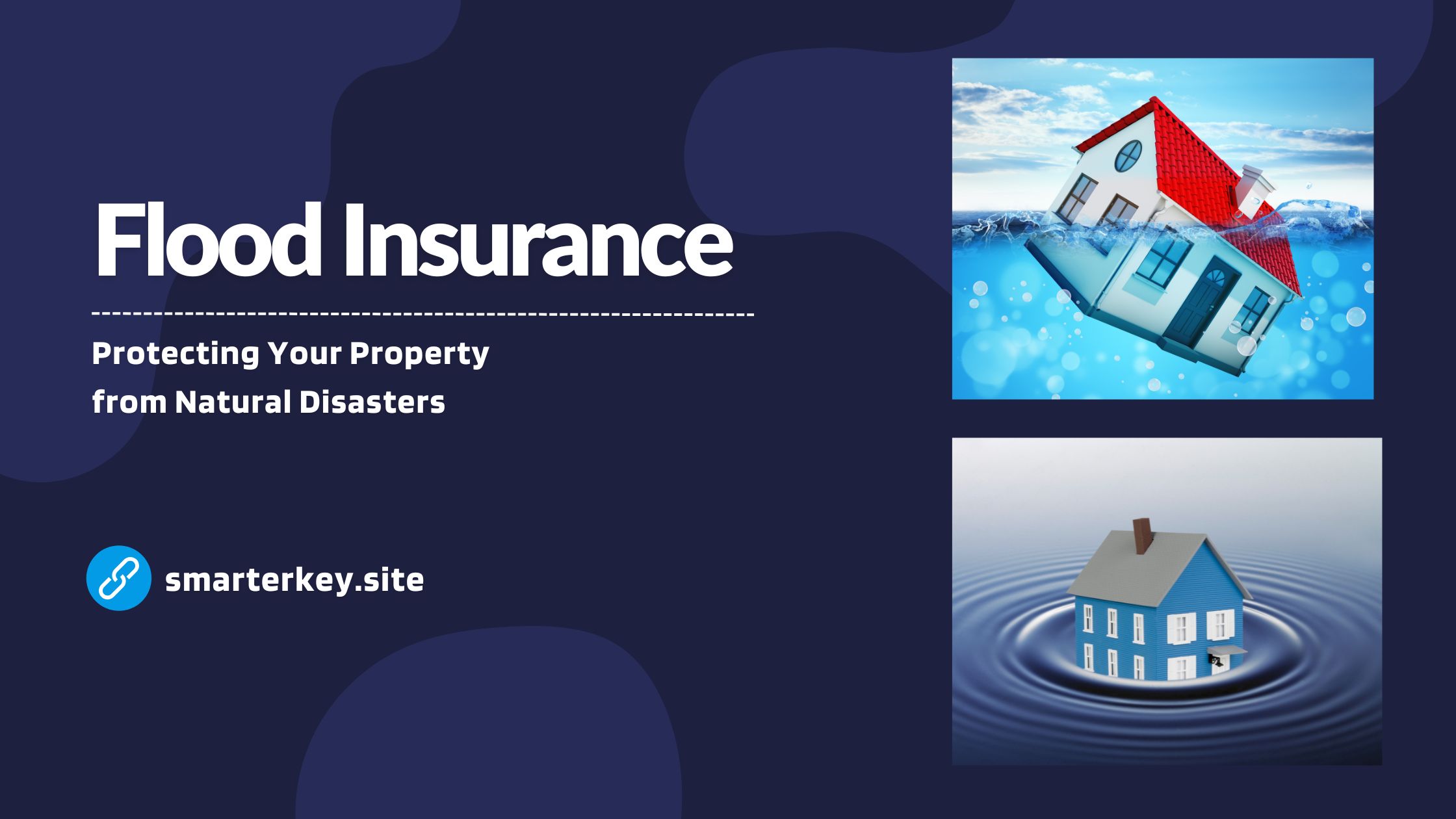Introduction
Flood Insurance: Protecting Your Property from Natural Disasters. Flooding is one of the most common and costly natural disasters worldwide, causing billions of dollars in damage each year. Homeowners and businesses in flood-prone areas face significant financial risks if they are not adequately insured. Flood insurance is designed to help mitigate these risks by providing financial protection against water-related damages. This article explores the importance, benefits, types, and considerations of flood insurance.

1. What is Flood Insurance?
Flood insurance is a type of property insurance that covers losses and damages caused by flooding. Unlike standard homeowner’s insurance policies, flood insurance is specifically designed to cover damages resulting from rising water levels due to storms, heavy rain, hurricanes, or overflowing rivers.
2. Importance of Flood Insurance
2.1 Protection Against Unpredictable Weather
Climate change has led to unpredictable weather patterns, increasing the risk of flooding in various regions. Flood insurance ensures financial protection against unexpected disasters.
2.2 Coverage Beyond Standard Homeowners’ Insurance
Most standard homeowners’ insurance policies do not cover flood damage. Without separate flood insurance, property owners are left to cover repair costs on their own.
2.3 Financial Security and Recovery
Recovering from flood damage can be costly. Flood insurance helps homeowners and businesses repair and rebuild without draining their savings.
2.4 Compliance with Lender Requirements
If a property is located in a high-risk flood zone, mortgage lenders may require flood insurance as a condition for financing.
2.5 Federal Disaster Assistance Limitations
Government disaster assistance is not always available and often comes in the form of loans that must be repaid. Flood insurance provides direct financial relief without added debt.
3. Types of Flood Insurance Policies
3.1 National Flood Insurance Program (NFIP) Policies
The NFIP, managed by the Federal Emergency Management Agency (FEMA), offers flood insurance to homeowners, renters, and businesses in participating communities. It provides coverage for both buildings and contents.
3.2 Private Flood Insurance
Private insurers offer customized flood insurance policies with higher coverage limits and additional benefits beyond NFIP policies.
3.3 Commercial Flood Insurance
Businesses can obtain flood insurance to protect their commercial properties, inventory, and equipment from flood-related losses.

4. Benefits of Flood Insurance
4.1 Coverage for Structural Damage
Flood insurance covers damage to the foundation, walls, electrical systems, plumbing, and other structural components of a building.
4.2 Protection for Personal Belongings
Policies often include coverage for furniture, appliances, clothing, and other personal belongings damaged by flooding.
4.3 Living Expenses Coverage
Some policies may help cover additional living expenses if the home becomes uninhabitable due to flooding.
4.4 Business Interruption Protection
For businesses, flood insurance can help cover lost revenue due to business disruptions caused by flooding.
4.5 Fast Recovery and Peace of Mind
Having flood insurance ensures a quicker recovery process and financial stability during challenging times.
5. Factors Affecting Flood Insurance Premiums
5.1 Location and Flood Zone Classification
Properties located in high-risk flood zones generally have higher premiums compared to those in lower-risk areas.
5.2 Elevation of Property
The elevation of a home or business relative to the base flood elevation affects premium costs.
5.3 Coverage Limits and Deductibles
Higher coverage limits and lower deductibles result in higher premiums.
5.4 Building Construction and Materials
Homes built with flood-resistant materials and elevated structures may qualify for lower premiums.
5.5 Past Flood Claims
Properties with a history of flood claims may have higher premiums or limited coverage options.
6. How to Choose the Right Flood Insurance Policy
6.1 Assess Your Flood Risk
Use FEMA’s flood maps or consult a professional to determine the flood risk of your area.
6.2 Compare NFIP and Private Policies
Evaluate the benefits of government-backed NFIP policies versus private insurance to determine the best fit.
6.3 Understand Coverage Details
Review what is covered and excluded in different policies, including structural damage, contents, and additional living expenses.
6.4 Check for Discounts
Some insurance providers offer discounts for flood mitigation measures such as installing flood barriers or elevating a property.
6.5 Consider Additional Coverage
If the NFIP coverage limits are not sufficient, consider supplementing it with private flood insurance.

7. Common Misconceptions About Flood Insurance
7.1 “I Don’t Need Flood Insurance Because I Live in a Low-Risk Area”
Flooding can happen anywhere, and nearly 20% of flood claims come from low- to moderate-risk areas.
7.2 “Federal Disaster Assistance Will Cover My Losses”
Federal aid is limited and often comes in the form of loans that must be repaid, unlike flood insurance payouts.
7.3 “Flood Insurance is Too Expensive”
The cost of flood insurance is often much lower than the potential out-of-pocket expenses for flood damage repairs.
7.4 “Homeowners Insurance Covers Flood Damage”
Standard homeowners’ insurance policies do not cover flood-related losses, requiring separate flood insurance.
8. Conclusion
Flood insurance is a crucial investment for homeowners and businesses, offering financial protection against the devastating effects of flooding. Understanding the different policy options, benefits, and factors affecting premiums can help property owners make informed decisions. With climate change increasing flood risks, securing a comprehensive flood insurance policy is essential for safeguarding assets and ensuring financial stability in the face of natural disasters.
